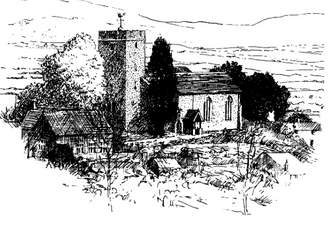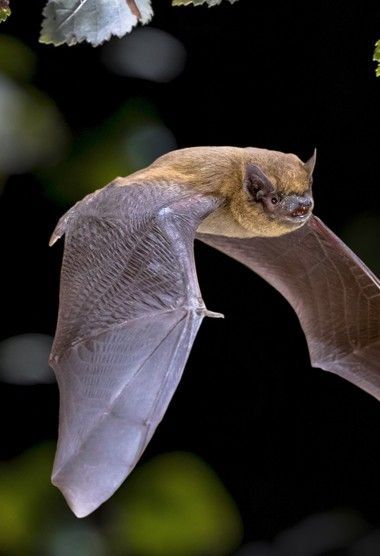Our Nature
The Flora and Fauna of St. James' Church
In and around the church there are plenty of animals and plants that have made it their home. Here we talk about just a few.
Bats
The most recent formal bat survey undertaken at the church was conducted in the summer of 2017 and a wide variety of species were recorded.
The species with confirmed sightings as they emerged from the church were:
- Common Pipistrelle
- Soprano Pipistrelle
- Brown Long-Eared and
- Natterer's
Bats were separately observed foraging in and around the trees in the churchyard and in addition to those listed above also included:
- Lesser Horseshoe and
- Barbastelle
Image: PublicDomainPictures.net
Birds
Common Swifts nest in numerous sites under the south-facing eaves of the church roof. Spending only three months of the year in the UK they return each year from Africa to nest in the same spots.
Swallows are another migratory visitor during the late spring and summer and have nested in and around the church for years.
Red Kites, once driven almost to extinction in Britain are now a common site over the church as are buzzards, another of our larger native birds of prey. Their fly-bys always trigger the rooks in the rookery beside the church and their distinctive alarm calls are inevitably followed by a mob of them seeing off the larger interlopers.
Bees, Beetles and Butterflies
The church yard has always attracted the "Bs" - bees, beetles and butterflies - even more so now that most of the ground around the church is left to its own devices.
Honey bees nest in the wall of the church, just above the porch. The hive can often be seen in May when the colony splits into two and form a swarm.
A myriad of different beetles make their home in the grounds. One of these is the Green Shield Bug. There are more than 40 species of shield bug in the UK and there are two types of green shield bug in the UK. The common green shield bug has a bright green body with tiny brown 'puncture marks', and brown wing tips. It's native to the UK and is common throughout England and Wales.
Butterflies are common colourful visitors to the churchyard. The male Brimstone is the only large, lemon-yellow butterfly in the UK, so is unmistakable. Brimstones live for a whole year. They hibernate in plant cover such as ivy, where their scalloped, veined wings closely resemble leaves, providing excellent camouflage.
Wild Flowers
The church yard is a haven for many wild flowers. Here's a few words about just three of them:
Red Clover converts nitrogen in the air to nitrates to enrich the soil and it is also a good carbon capture plant.
Yellow Rattle is an interesting annual that thrives in grasslands, living a semi-parasitic life by feeding off the nutrients in the roots of nearby grasses.
Orange Hawkbit - also known by a plethora of other names such as fox-and-cubs, devil's paintbrush and grim-the-collier, is a perennial and one of the very few bright orange flowers of our native flora
Trees
Like many churchyards, that of St. James' supports a range of mature trees. In the last arboricultural assessment conducted in 2017 these included:
- Lawson Cypress
- Common Lime
- Common Ash
- Common and Irish Yew
- Holly
- Sycamore and
- Elder.
Grasses
There are many varieties of grasses that thrive in the churchyard including wild oats and rye grass.
This is rather a specialist area and we are awaiting a report on some of the more important growing in the churchyard.
Caring for God's Acre
Caring for God’s Acre was established in 2000 as a national charity, promoting the conservation of burial sites and supporting the volunteers who look after and maintain them.
Their input helps to preserve rare species of plants and wildflowers and they advise on management of grassland to encourage wildlife.

